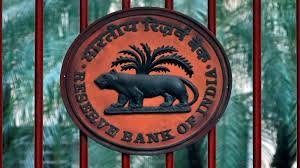RBI Announces 8% Interest on Floating Rate Bond 2034: All You Need to Know
The Reserve Bank of India (RBI) recently made a significant announcement regarding the issuance of Floating Rate Bonds (FRBs) with a fixed interest rate of 8% maturing in 2034. This move by the central bank comes amidst efforts to manage liquidity and stimulate economic growth in the country.
What are Floating Rate Bonds (FRBs)? Floating Rate Bonds, as the name suggests, are debt instruments whose interest rates fluctuate with prevailing market rates. Unlike traditional fixed-rate bonds, the interest rate on FRBs is not fixed throughout the bond’s tenure, making them an attractive investment option for individuals seeking protection against interest rate fluctuations.
RBI’s Initiative to Stimulate Economic Growth The decision to issue FRBs with an 8% interest rate underscores RBI’s commitment to supporting economic recovery and ensuring adequate liquidity in the financial system. By offering an attractive interest rate, RBI aims to incentivize investors to participate in government borrowing, thereby injecting liquidity into the market and funding developmental projects.
Implications for Investors and Government For investors, the RBI’s announcement presents an opportunity to earn competitive returns on their investments while maintaining flexibility against interest rate risks. Additionally, investing in government-backed securities like FRBs provides a relatively safer investment avenue compared to other market instruments.
Conclusion The RBI’s decision to announce 8% interest on Floating Rate Bonds 2034 reflects its proactive approach towards monetary policy management and economic rejuvenation. As India navigates through the challenges posed by the ongoing pandemic and strives for sustainable growth, such initiatives play a crucial role in fostering investor confidence and stimulating economic activity.

Why this News is Important:
Boosting Investor Confidence: The RBI’s announcement of 8% interest on Floating Rate Bonds 2034 is significant as it aims to boost investor confidence by offering an attractive investment opportunity amidst economic uncertainties.
Stimulating Economic Growth: This move is crucial for stimulating economic growth as it encourages investment in government securities, thereby injecting liquidity into the market and funding developmental projects.
Managing Interest Rate Risks: The introduction of Floating Rate Bonds provides investors with a means to manage interest rate risks effectively, contributing to a more stable investment environment.
Supporting Government Borrowing: By offering competitive interest rates on FRBs, the RBI facilitates government borrowing at favorable terms, enabling the financing of key initiatives and infrastructure projects.
Enhancing Monetary Policy Tools: The issuance of FRBs expands the range of monetary policy tools available to the RBI, allowing for more nuanced management of liquidity and interest rates in the economy.
Historical Context:
Floating Rate Bonds have been used by governments and corporations worldwide as a tool to manage interest rate risks and attract investors. The concept originated in the late 20th century as financial markets evolved, offering investors an alternative to traditional fixed-rate bonds.
In India, the issuance of Floating Rate Bonds gained prominence in recent years as the government and central bank sought innovative ways to manage liquidity and stimulate economic growth. The RBI’s decision to offer FRBs with an 8% interest rate reflects its adaptability to changing market dynamics and commitment to fostering a conducive investment climate.
Key Takeaways from “RBI Announces 8% Interest on Floating Rate Bond 2034”:
| Serial Number | Key Takeaway |
|---|---|
| 1. | Floating Rate Bonds have a fixed interest rate of 8%. |
| 2. | Interest rates on FRBs fluctuate with market conditions. |
| 3. | The issuance aims to stimulate economic growth. |
| 4. | Investors can manage interest rate risks effectively. |
| 5. | FRBs offer a secure investment avenue for investors |
Important FAQs for Students from this News
What are Floating Rate Bonds (FRBs)?
Floating Rate Bonds are debt instruments whose interest rates fluctuate with prevailing market rates. Unlike traditional fixed-rate bonds, the interest rate on FRBs is not fixed throughout the bond’s tenure.
What is the interest rate offered by RBI on the Floating Rate Bond 2034?
The Reserve Bank of India (RBI) has announced a fixed interest rate of 8% on the Floating Rate Bond 2034.
How do Floating Rate Bonds benefit investors?
Floating Rate Bonds provide investors with an opportunity to earn competitive returns while managing interest rate risks effectively. Additionally, investing in government-backed securities like FRBs offers a relatively safer investment avenue.
What is the significance of RBI’s decision to issue FRBs with an 8% interest rate?
RBI’s decision aims to stimulate economic growth by encouraging investment in government securities, injecting liquidity into the market, and funding developmental projects.
What role do FRBs play in monetary policy management?
The issuance of Floating Rate Bonds expands the range of monetary policy tools available to the RBI, allowing for more nuanced management of liquidity and interest rates in the economy.
Some Important Current Affairs Links


















